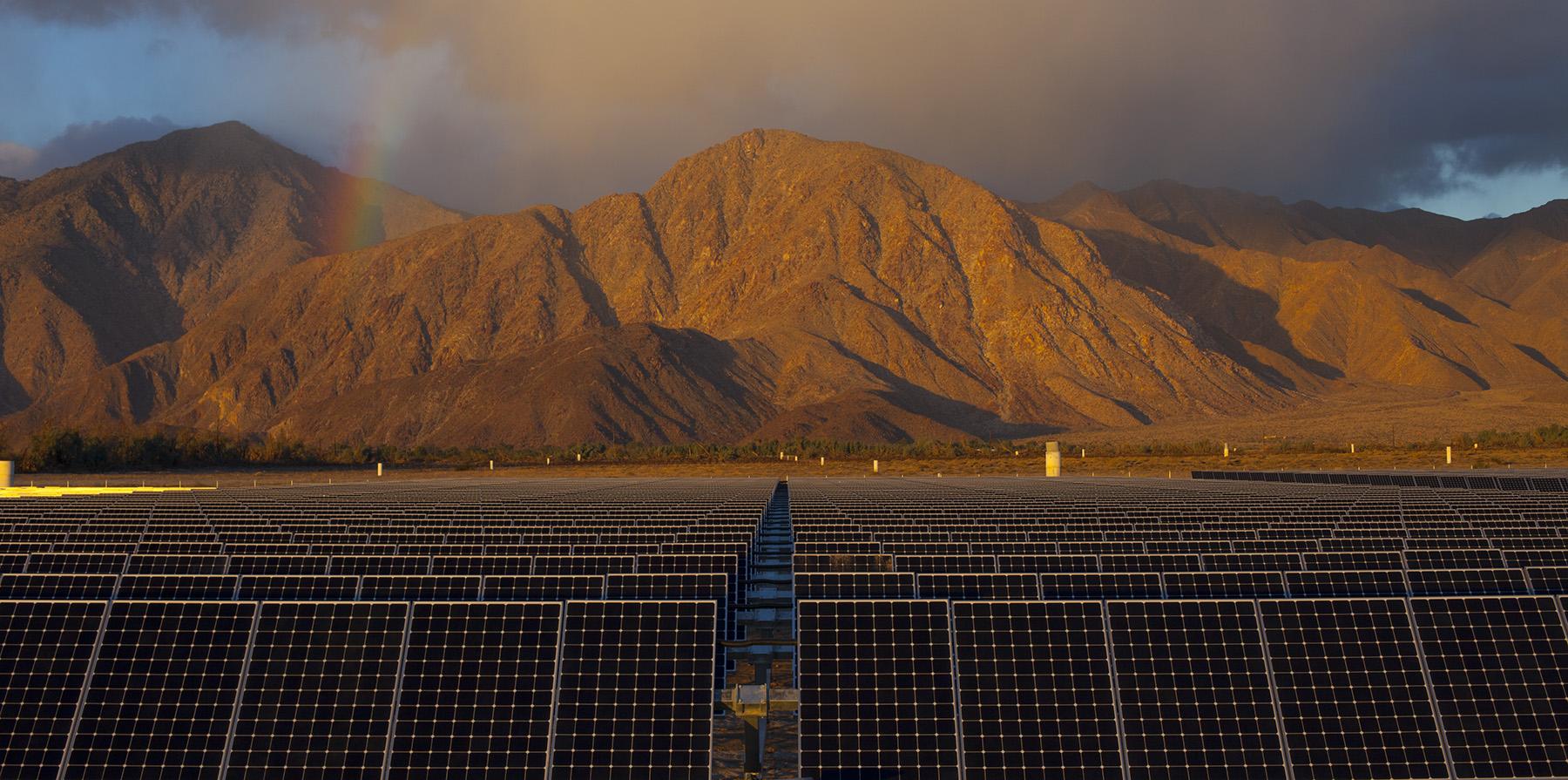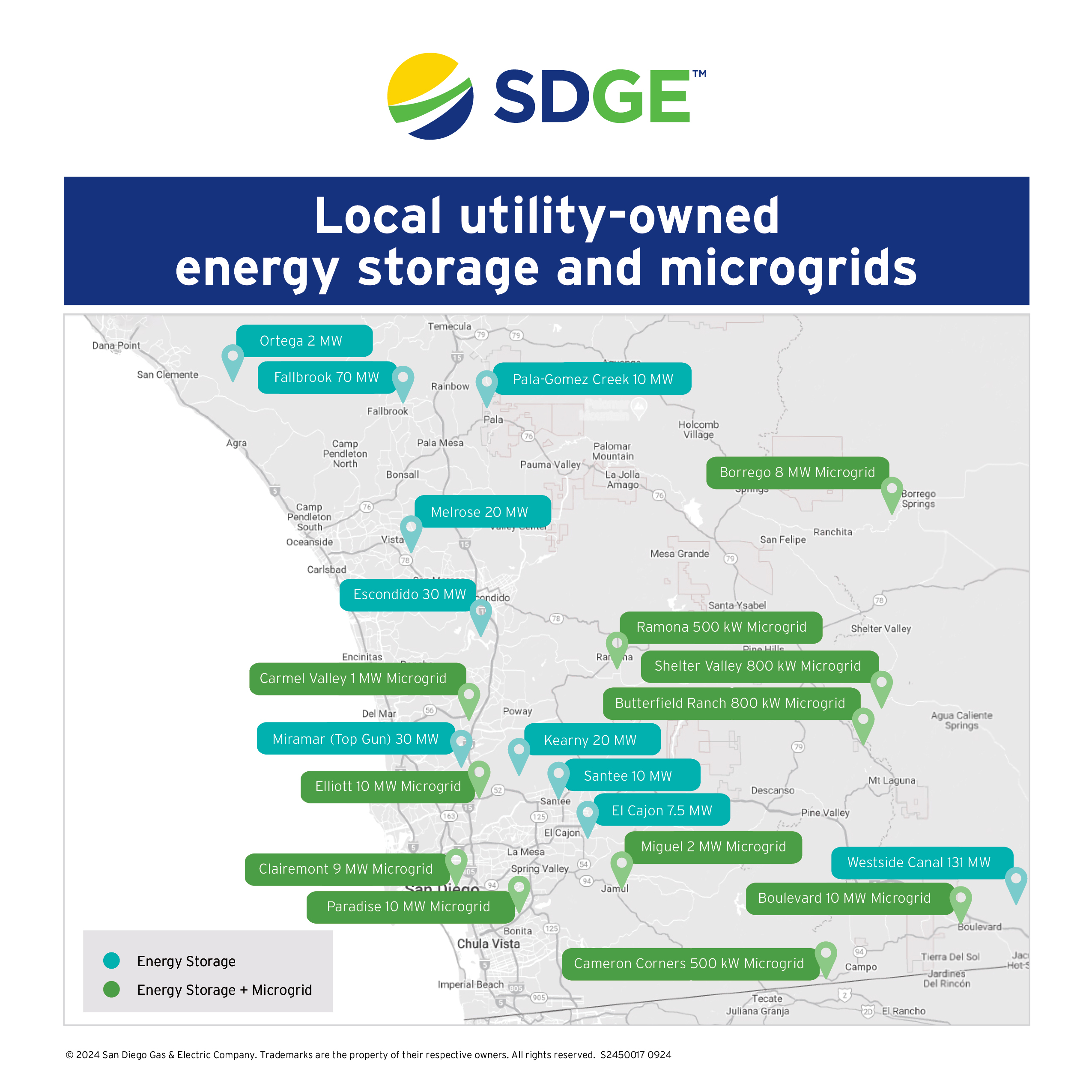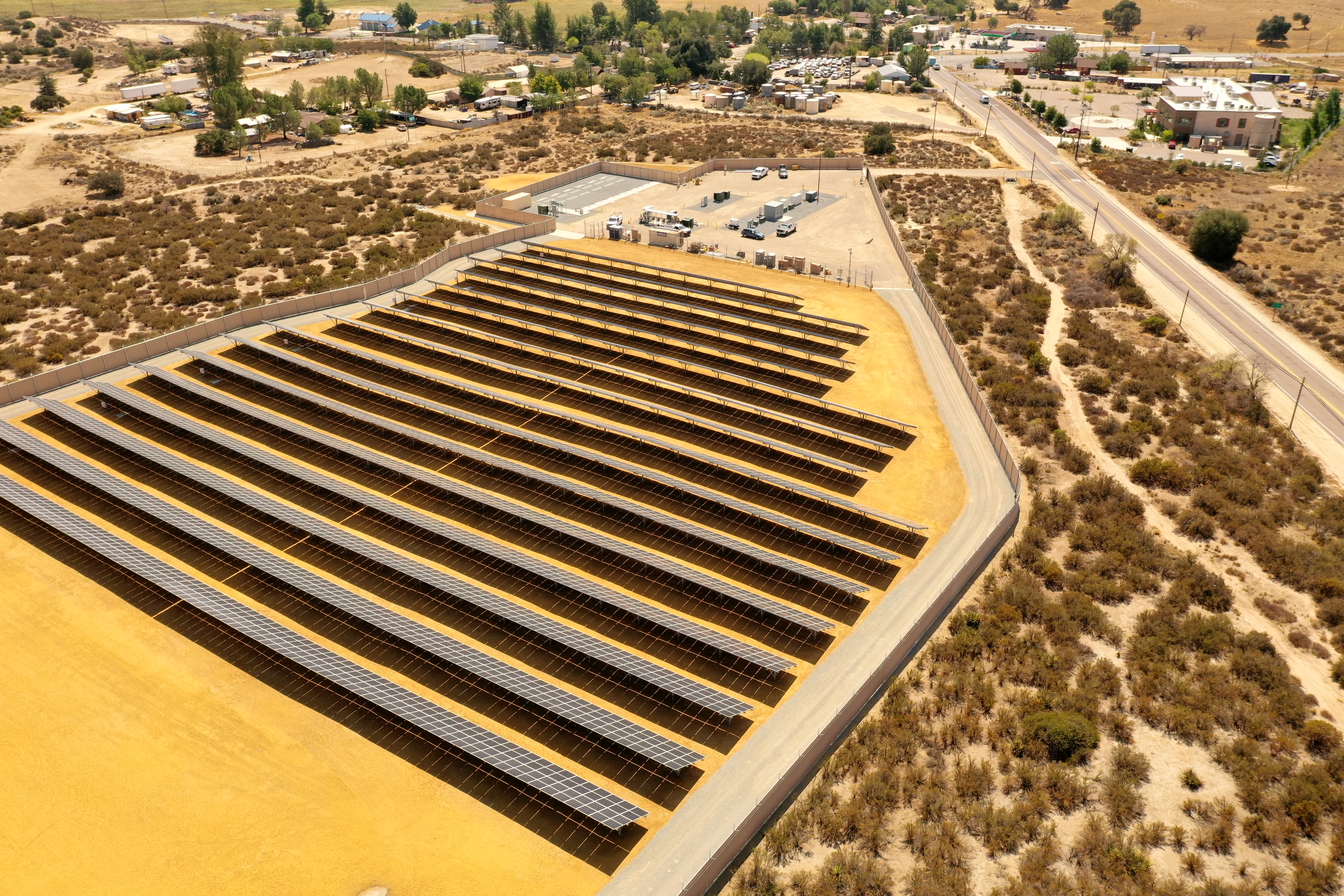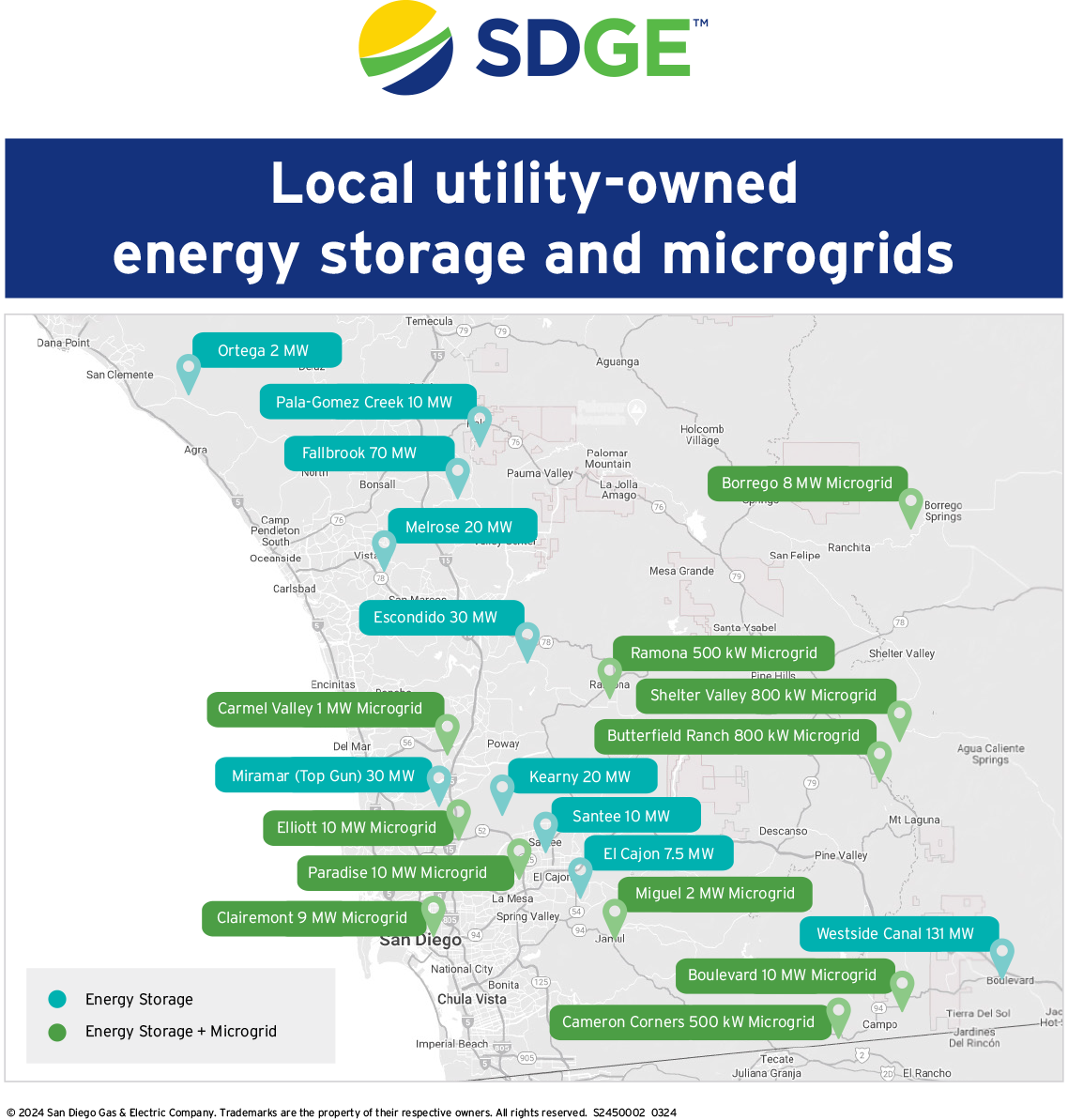Microgrids Help Integrate
Renewable Energy and
Improve Community Resiliency
SDG&E is committed to modernizing the power grid to integrate more clean energy, enhance grid reliability, and improve safety. Microgrids, which are basically mini power grids, use technologies such as energy storage to provide power to specific communities or neighborhoods if an outage occurs on the larger grid.

The Borrego Springs Microgrid is a Glimpse into the Future
In 2013, SDG&E installed America’s first utility-scale microgrid to provide community resiliency to Borrego Springs, a remote desert town in northeastern San Diego County that is connected to the larger grid by a single transmission line. Borrego Springs is home to more than 3,000 residents who experience extreme heat and monsoonal rains, which can impact energy service. The microgrid helps keep critical facilities, such as fire stations or schools, energized during adverse or high-fire risk weather conditions that necessitate a Public Safety Power Shutoff (PSPS).

Borrego Springs Microgrid uses smart grid technology — including local power generation, local energy storage, and automated switching — to create a more robust and resilient grid that can dynamically react to changing environmental and grid conditions. The Borrego Springs Microgrid is connected to the smart grid, but it can disconnect and function independently during emergencies to supply vital electricity to the local community through its on-site resources.
SDG&E is currently developing several innovative projects to reduce carbon emissions and strengthen community resilience at the Borrego Springs Microgrid.
Transitioning to 100% Clean Energy
SDG&E is currently upgrading the Borrego Springs Microgrid to operate with 100% clean energy, which is supplied by two local solar farms and ample customer rooftop systems.
Learn more about the Borrego Springs Microgrid transition to 100% clean energy
Learn more about hydrogen projects at SDG&E
SDG&E Microgrids Support Communities in High-Fire Threat Districts
The Borrego Springs Microgrid offers a powerful example of the potential of smart grid technology. When the microgrid was used during an actual power emergency, it gave SDG&E and our customers a glimpse of a “utility of the future” — one in which the grid itself can respond to outages by routing and restoring power where it’s most needed, bringing vital energy to residents, and quite possibly saving lives in the process.
SDG&E is leveraging new, innovative technologies and lessons learned at Borrego Springs to build more microgrids across the company’s service territory. For example, two newly operational microgrids are designed to support communities in the high-fire threat districts of Ramona and Cameron Corners.

Ramona Microgrid
In April 2022, SDG&E completed a new microgrid to provide backup power to the Ramona Air Attack Base (RAAB), dedicated to protecting rural communities from wildfires. As home to CAL FIRE and the U.S. Forest Service’s aerial firefighting assets, RAAB responds to an average of 450 calls per year and is the oldest Air Attack Base in the Department’s system. The Ramona Microgrid was built in collaboration with the two agencies it supports, and it produces zero emissions because it is powered by 500 kW / 2,000 kWh of battery.
Cameron Corners Microgrid
Cameron Corners is a remote community located in southeastern San Diego County. To minimize the impact of a PSPS on this community, SDG&E built the microgrid to help keep critical facilities powered during extended outages and emergencies. These facilities include central telecommunications, medical centers, fire and police stations, and local convenience stores that residents depend on for safety needs and necessities such as ice, water and gasoline. The project includes an 875 kWh solar array to generate renewable electricity, plus a non-hazardous, non-flammable, and fully recyclable 2,400 kWh iron flow battery to store clean energy. During normal grid operations, the microgrid will dispatch energy through CAISO to support overall grid stability and reliability.

Savings Opportunity
Find out if your microgrid project qualifies for the capacity reservation component (CRC) of standby charge suspension.
